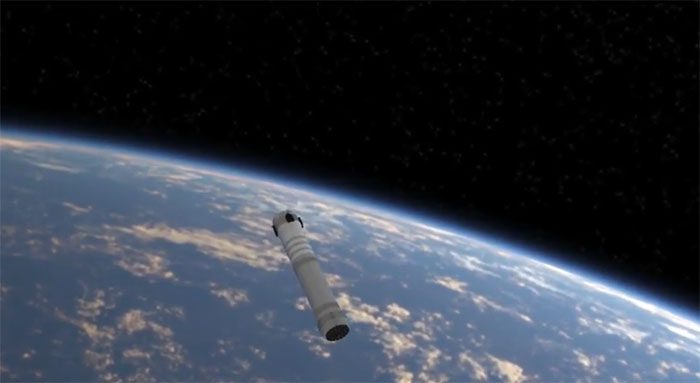China Introduces Reusable Rocket Concept, Featuring a Catching Mechanism for the First Stage and Vertical Landing for the Second Stage.
Simulation of how the two-stage reusable rocket returns to Earth. (Video: Xinhua).
At the 15th China International Aerospace Exhibition held from November 12 to 17 in Zhuhai, Guangdong Province, the China Academy of Launch Vehicle Technology (CALT) revealed that the country’s future heavy-lift rockets will have three configurations: three-stage, two-stage, and fully reusable two-stage designs. The reusable model was displayed at the exhibition.
“We have developed a grid fin recovery system for the reusable rocket model and achieved a breakthrough in the past two years by completing a small-scale sea recovery test,” said Wang Yue, deputy director of CALT’s aerospace department. According to him, reusable rockets play a crucial role in China’s space efforts and also present new opportunities for the global development of the space industry.
CALT plans to develop modules suitable for all three rocket configurations in two phases. The modules in the first phase include a common first stage, a non-reusable second stage, and a third stage powered by hydrogen-oxygen. Together, they will assemble into a basic heavy-lift rocket with a diameter of 10 meters, capable of carrying at least 100 tons to low Earth orbit and at least 50 tons to lunar transfer orbit. The three-stage rocket, with high speed and altitude, is suitable for deep space missions such as Mars exploration or asteroid missions.

Module design allows each part of the rocket to be developed, manufactured, and tested independently.
In the second phase, CALT will develop an adaptable second stage and manufacture a fully reusable two-stage rocket. This rocket type is expected to reduce costs, increase efficiency, and scale up space transportation. It will focus on near-Earth missions, supporting satellite networks and infrastructure development.
The module design enables each part of the rocket to be developed, manufactured, tested independently, and combined according to different mission requirements. The development of common modules ensures that some parts and technologies can be used across different rocket types, helping to reduce costs and maintenance challenges.
CALT also noted that the new heavy-lift rockets will integrate multiple intelligent systems, advanced materials, and environmentally friendly technologies. “Intelligent technology will enhance reliability and safety by monitoring flight data in real-time and predicting potential issues,” Wang stated.



















































